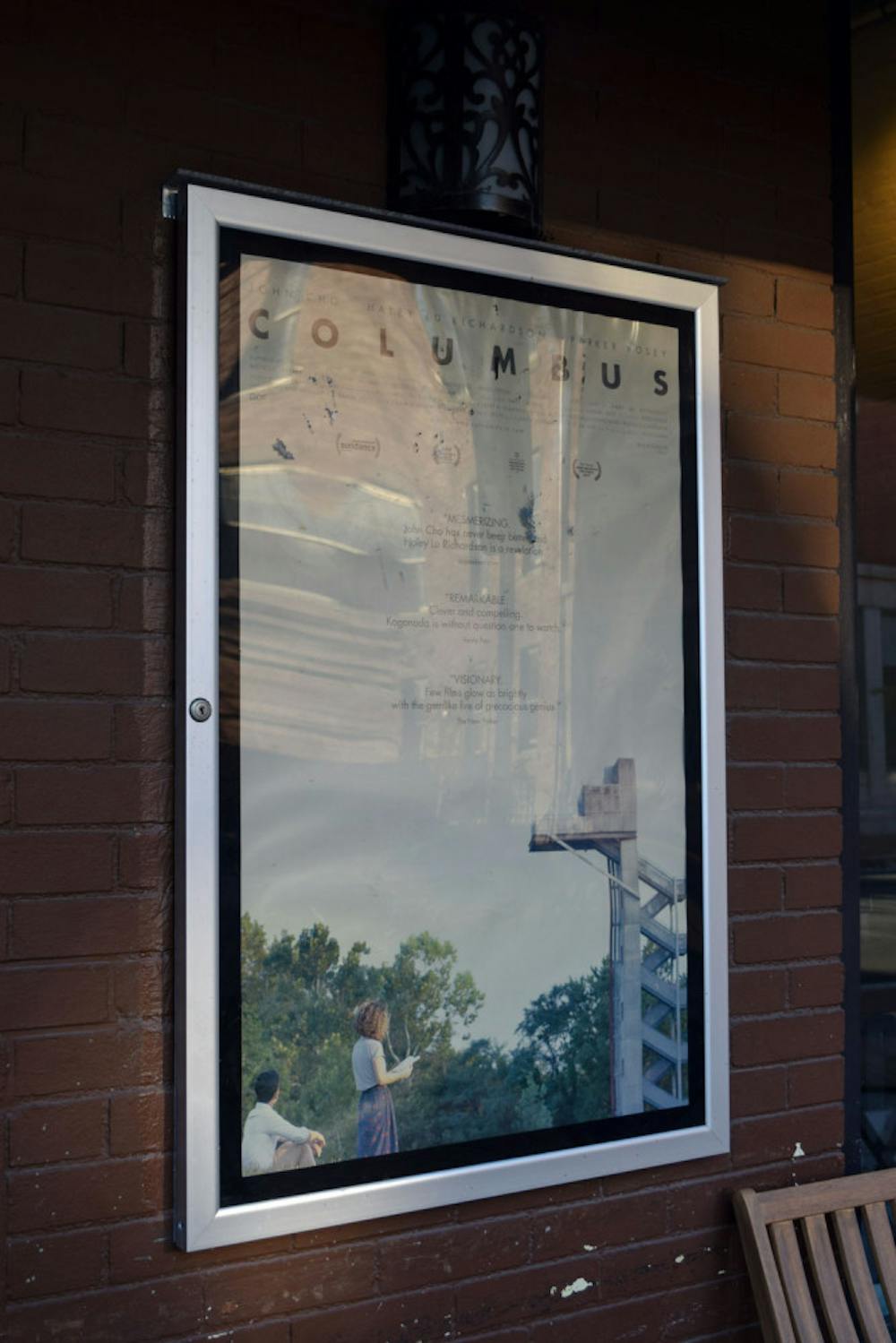Kogonada’s directorial debut in the 2017 film “Columbus” serves as the pioneer of a new genre of beautifully-made, self-aware and quiet films in that it slows down the plot and switches out traditional narrative tropes in favor of meticulous character development and thoughtful dialogues about family and aesthetics.
The film takes place in Columbus, Indiana and centers around Jin, a middle-aged Korean-American book translator that returns from Korea to care for his comatose architect father, and Casey, a recent high school graduate who has put off college to look after her troubled mother.
The two characters, diligently portrayed by John Cho and Haley Lu Richardson, navigate disparate life paths at first, but fatefully meet and quickly bond over their shared anguish and family troubles despite their differences in background and age.
Until Casey decides to leave Columbus to pursue her dreams of becoming an architect in the quasi-climax of the film, the new pair of friends talks about each other’s lives on outings to various famous architectural sites around Columbus, a hotbed of mid-century modernist architecture.
The two first encounter each other on Casey’s smoke break from her job at the library, when she catches Jin on the other side of a fence outside of the bed and breakfast where Jin is residing while in Columbus. This initial encounter channels the film’s central ethos of similarity despite difference.
Most prominent in this scene is the emergence of the theme of racial tension and Casey’s insularity developed through her upbringing in a racially homogenous community: Casey asks Jin, who has just gotten off a phone call in Korean, “You speak English?” “Of course,” he says, his response suggesting that this is not the first time he has fielded this line of questioning in a small town like Columbus.
The disconnect between Jin and Casey manifests in the physical black, wrought-iron fence between them. They begin to walk along it as the conversation unravels, yet curiously never cross it to meet one another and share a side of the fence. Perhaps this alludes to the reserved nature of the film. While the two characters initially hint at mutual romantic interest, their relationship never develops beyond friendship.
Yet the fence more critically speaks to the Kogonada’s emphasis on aesthetics; architecture does not serve as mere setting, but as a commanding force, one just as important as any of the characters. As tensions grow within Jin and Casey’s separate family dramas as well as between them, the architectural sites that frame their conversations continue to magnify in scale and intensity. The visual content of “Columbus” is enough to satisfy and pleasure the viewer.
Despite certain merits of gradually building drama, the true demise of the film is in the plot’s slow and frankly uneventful development. Kogonada eschews the conventions of rising action, climax and resolution. While reflective of the pace of a small town, this realist approach can bore the audience. One particularly self-indulgent camera shot from a car window shows Casey chasing after Jin, her figure slowly falling out of focus for upwards of a long, painful minute. Yet perhaps it’s about time for American audiences, who have long been desensitized by high-action blockbusters about superheroes, to ease into appreciating visual-heavy scenes with minimal dialogue — the bread and butter of foreign cinema for decades.
If viewers can find the strength to bear with its slow, unnerving sense of solace in the place of rapid fire action, they will find Kogonada’s film to be an effective meditation on American life today, away from turmoil. Rather than mirroring the chaotic, traumatic events dominating the media, “Columbus” offers a reprieve with the portrayal of an unlikely encounter in an insular, often overlooked part of the country.





